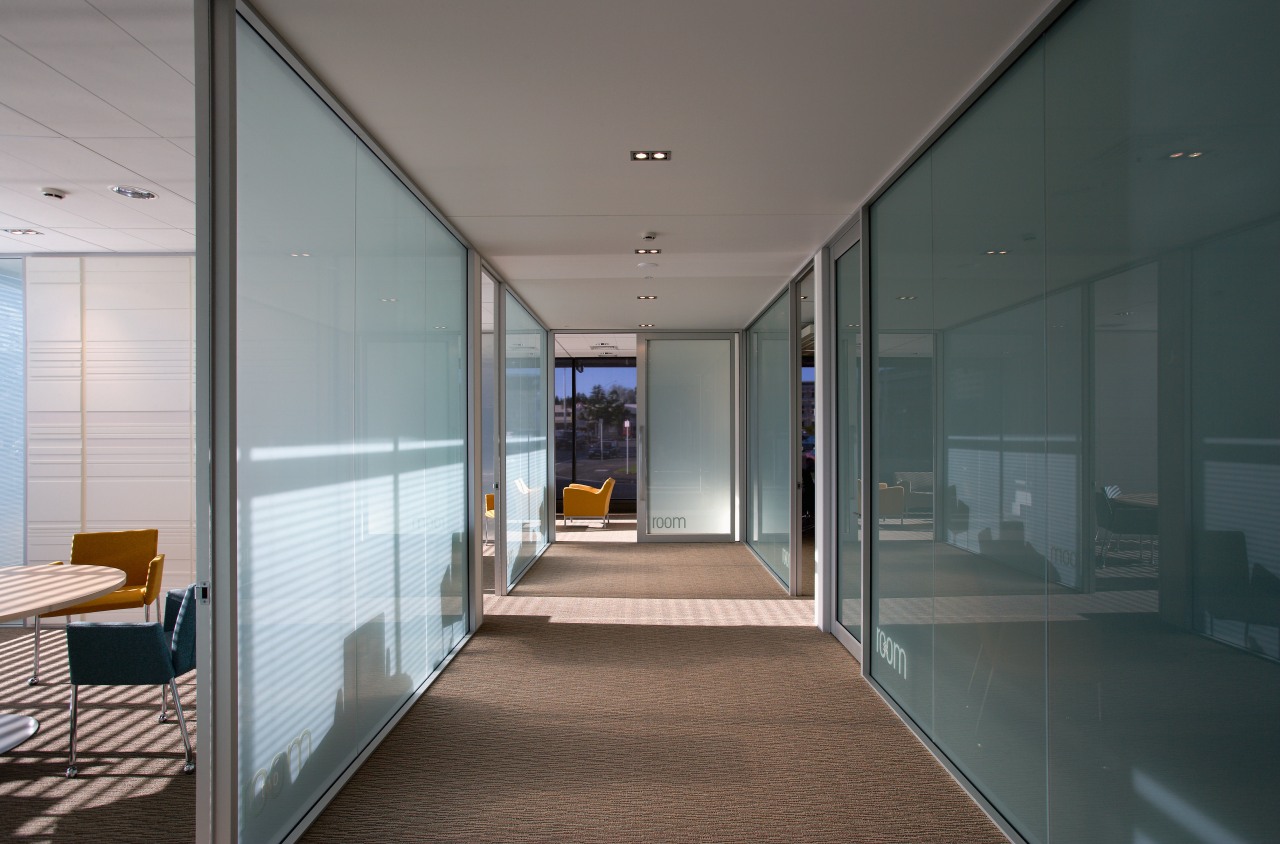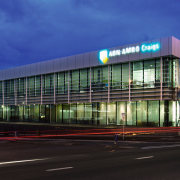Starting over
This purpose-built head office features a mostly barrier-free working floor designed to enhance communication between work groups
When a company is expanding, it's usually a good indication that something is going right. However, alongside growth come new challenges. Staff accommodation, for one, is essential to address, especially as both company culture and employee performance are directly influenced by environment.
At the Tauranga head office of ABN AMRO Craigs, a sustained increase in numbers led to staff being housed in two buildings. This hampered the development of an inclusive staff culture, says chief executive officer Frank Aldridge.
"One office was a building specifically designed for multiple tenants. As we expanded, we gradually took over all four separate parts. With two buildings our work groups were also sometimes isolated. This led to an us and them' culture, with staff feeling confined to their particular quarters."
After searching unsuccessfully for suitable office space, the company decided that the best solution was to build a new head office. This is a trend that project director Tim Hooson, from architectural firm Jasmax, believes is becoming more prevalent, as purpose-built offices tend to encourage longer-term tenancies something that benefits both developers and tenants.
At 1670m², and spread over two levels, the new head office provides workspace for up to 120 staff, 80% of whom are concentrated in an open-plan area on the second floor.
"From the outset, ABN AMRO Craigs was committed to a landmark structure that would not only improve its culture and facilitate its business needs, but also give something back to the local community in terms of architecture and energy-efficient design," says Hooson.
The rectangular structure is distinguished by extensive glazing. On the northern facade a louvre system provides both architectural appeal and passive thermal control. However, because of Tauranga's warm climate, further measures were incorporated to reduce heat gain.
"In many ways, provincial New Zealand is leading the way in terms of adopting advanced architectural solutions," says Hooson.
"In our collaboration with ABN AMRO Craigs it was clear from the beginning that the environmental footprint of the building was to be kept to a minimum. This involves a small capital cost, but results in reduced energy consumption."
As a solution to the problem of heat gain and noise from the busy adjacent road, Jasmax designed a twin skin window system with a 600mm cavity between the glass sheets. As air in the cavity becomes warm, it rises to the top, where it is extracted for use in other areas of the building.
Besides measures to limit energy use, such as light sensors, the design was influenced by the Tauranga lifestyle. Storeroom space was given over to a staff shower facility, while part of the carpark was devoted to bike parking.
Through a series of meetings business requirements were assessed. The office was to be uncluttered, and the reception was to reflect the branding and quality of the organisation, without alienating any of the company's diverse client base. Compliancy with the New Zealand Stock Exchange regulations also meant balancing a no-barrier environment with a need for privacy.
To define staff needs, workshops were held with a number of goals and resolutions decided.
"Encouraging face-to-face interaction was expressed many times. Previously, it was easier for staff to stay in their quarters and communicate via phone or email. By minimising physical barriers, it's easier for work groups to communicate."
In the company's former offices, 1500mm-high partitions between desks created cells that prevented visual connections. By removingphysical barriers, such as high partitions, face-to-face communication was simplified. This also met the company's request for an uncluttered workspace.
Further to this, use of acoustic panelling means that informal breakout areas can be used with minimal impact on other staff. The lunch room was also placed in one of the building's most favourable locations, rather than being located at the back.
To provide flexibility to cope with staff changes and fluctuations 50 staff layout changes occurred in the previous six months a flexible furniture-based solution to allow change was introduced.
Credit list
Architect
Project management and fit-out coordination
Interior design
Story by: Trendsideas
Home kitchen bathroom commercial design
Walk this way – garden pathways to lead your thinking
From farmhouse to farmstead
Studying the details







